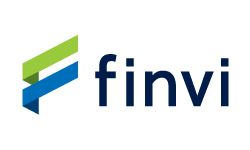Source: site

“Consumer and small businesses remain resilient,” JPMorgan Chase (NYSE:JPM) Chief Financial Officer Jeremy Barnum said on the company’s Q3 earnings call.
Due to that resilience, the bank lowered its 2025 outlook for card charge-offs to ~3.3% from its prior guidance of ~3.6% as delinquency rates are coming in lower than the bank expected.
It’s also the best year ever for new account acquisitions for its Sapphire card, he added.
The company’s Q3 EPS and revenue topped the Wall Street consensus estimate earlier on Tuesday, reflecting the revived investment banking activity and strength across its line of businesses.
However, the bank will be closely watching the labor market for softening. Chairman and CEO Jamie Dimon comments in the company’s Q3 press release flagged “a heightened degree of uncertainty stemming from complex geopolitical conditions, tariffs and trade uncertainty, elevated asset prices and the risk of sticky inflation.”
JPMorgan Chase (NYSE:JPM) increased its allowance for loan losses by $782M in Q3, compared with a $255M reduction in Q2. Since Sept. 30, 2024, the allowance climbed by $1.79B to $25.7B.
Drivers are all still in place for retail deposit growth that the company outlined at Investor Day, Barnum said. Management remains “confident about long-term growth dynamics.” But in the shorter term, its expectation for Q4 growth of 3% is pushed out, Barnum said.
The personal saving rate was lower in Q3 than the company expected, he said.
The bank recorded $170M of charge-offs in Q3 for the collapse of Tricolor, a used-car retailer and subprime auto lender, the CFO said. JPMorgan Chase (NYSE:JPM) has no exposure to First Brands, which filed for bankruptcy in September, he said.
The company can invest in initiatives like its Security and Resilience Initiative, announced on Monday, and return capital to shareholders, as the firm is “generating a lot of excess capital,” Barnum said. “We don’t love buying back stock at these levels, but we want to keep the excess capital reasonable.”
In speaking about AI investment, he said, “We need to make sure we remain anchored in facts and reality.” While it’s difficult to measure, there are “definitely productivity tailwinds from AI,” Barnum said.
The vast majority of lending that JPM does to non-depositor financial institutions is “highly secured,” Barnum said. A lot of private credit actors are large and sophisticated, he added.
In lending to that segment, Dimon said, “Yes, there will be additional risk in that category when we have a downturn… we think we’re quite careful.” When something like Tricolor occurs, “we scour all process, all procedures, all underwriting,” he added.
Regarding, the U.S. housing shortage, the bottleneck is in permitting and regulatory matters. He has been saying for years that the government should focus on reducing securitization requirements and other regulation to reduce the cost of mortgages, he added. The regulations put in place after the 2008 financial crisis were excessive.
When the discussion turned to non-bank financial firms, Dimon suspects that in the next downturn, credit losses in certain sectors will be worse than a usual downturn. JPMorgan is often surprised by the lending standards at some of those, he noted.
JPMorgan Chase (NYSE:JPM) stock dropped 1.7% in midday trading.




